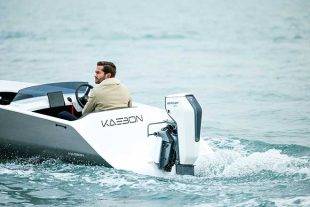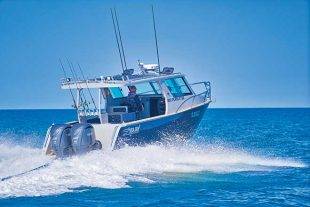I’M surprised at the number of my friends who have a VHF marine radio in their boat but no idea how to correctly use it.
Even more surprising is when they go offshore fishing and don’t log on with a marine rescue organisation for fear that they will sound foolish on the radio or might get in trouble for not saying the right thing. The truth is, you won’t get in trouble and the limited number of maritime coast stations are all manned by volunteers who are more than happy to ask you for the information they need to ensure your safety.
A Marine Radio Operator’s Certificate of Proficiency is required to be held by the operator of a VHF radio. Please note this rule does not apply if the vessel is in distress or assisting another vessel in distress. MROCP courses are run by volunteer marine rescue organisations.
I’ve got a mobile phone – why do I need a marine radio?
Mobile phones aren’t designed to get wet, their batteries go flat quickly, especially in areas of poor coverage, they can be totally out of coverage in some areas, and they only allow communication between two parties, so other vessels in your area that may be able to assist in an emergency cannot be alerted.
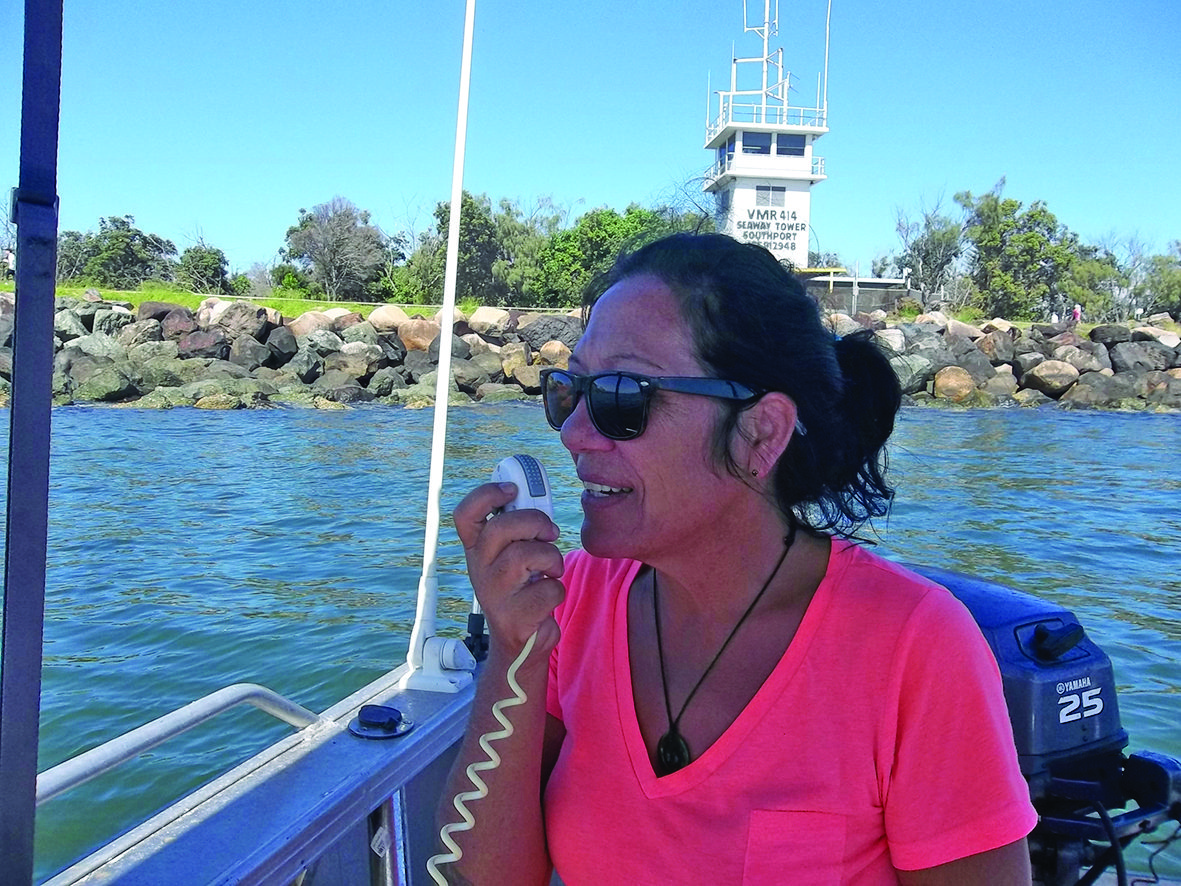
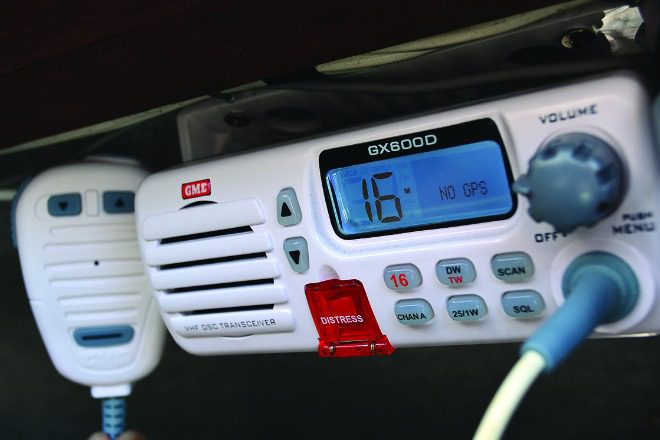
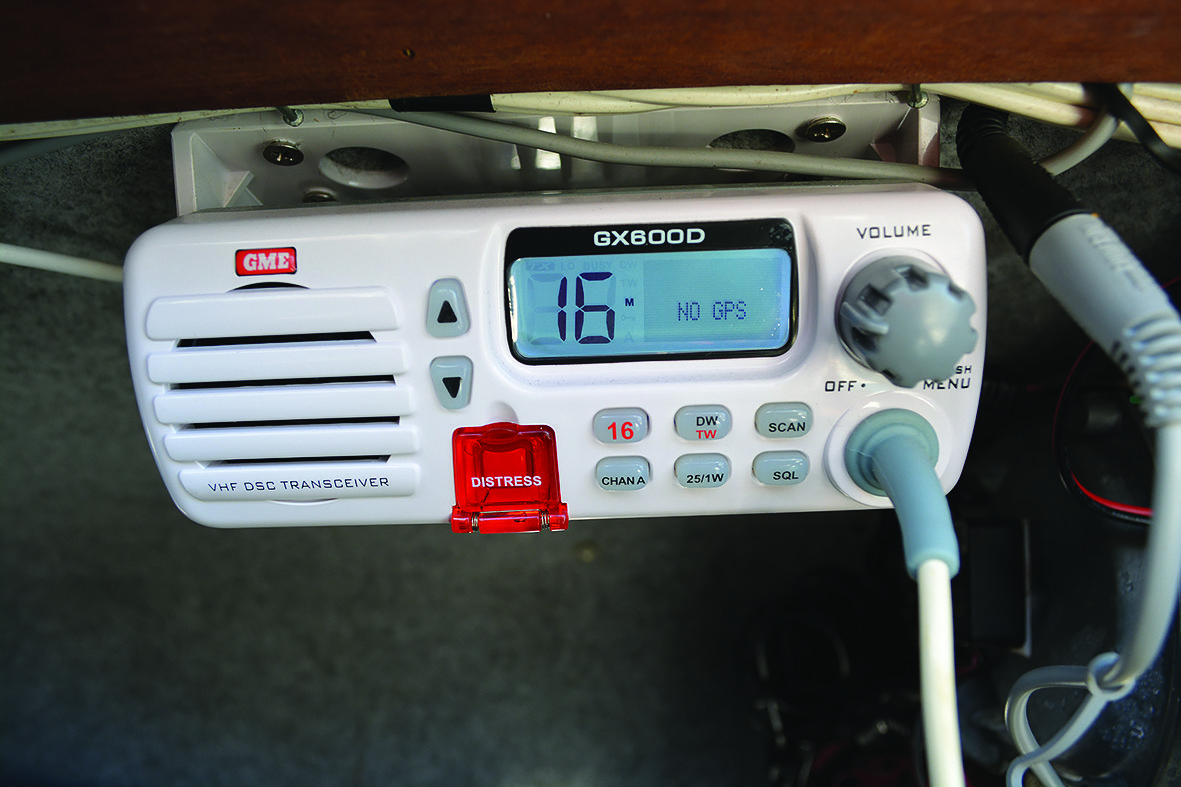
Who do I contact and what radio channel do I use?
I will cover emergency broadcasts a bit later, but to log on and off, receive a local weather forecast or seek non-emergency assistance (such as an engine breakdown in a safe area that requires a tow), you should contact the nearest coast station/volunteer marine rescue organisation.
VHF emergency channel 16 is known as the ‘distress, safety and calling’ channel. You may use the emergency channel to make initial contact with the coast station, though the operator may advise you to switch to another channel (the ‘working channel’) for further communication.
The working channel differs between coast stations and is often the preferred channel for initial communication because it frees the emergency channel for actual emergency broadcasts. If you don’t already know the working channel for the nearest volunteer marine rescue organisation, it is best to give the station a phone call prior to your trip to determine its call sign, working channel and hours of operation.
Being a life-saving communications device, a VHF marine radio should never be used for unnecessary chat between two vessels on emergency channel 16 or the working channels for the limited coast stations in the area. If you wish to contact another vessel, you may use channel 16 to make initial contact, then switch to channel 72 or 77 to relay your message.
I’m crossing a coastal bar – who do I contact?
When crossing a coastal bar, you should contact the nearest limited coast station. If you cannot get in contact with the nearest limited coast station for whatever reason, try contacting the next closest station.
The phonetic alphabet
The phonetic alphabet should be used if poor reception occurs and when specifying your boat registration number. For example, a boat registration number of CM660Q would be announced as “Charlie Mike Six Six Zero Quebec”.
Preparing your marine radio to transmit
- Raise your marine radio antenna to the vertical position.
- Switch on your radio.
- Adjust the volume to an appropriate level, such as halfway.
- Select the emergency channel or working channel for the limited coast station you wish to contact.
- Turn the squelch all the way down until you hear static, then up again until the static stops. Turning the squelch up too high will limit your transmission range. Some newer VHF radios have a squelch button that automatically adjusts the squelch to the correct level.
- Wait at least 30 seconds before transmitting to ensure you will not be interrupting any existing radio communications.
- Transmit by holding down the large PTT (push to talk) button on the side of your handheld microphone. Speak into the microphone and then release the PTT button to allow the party you are calling to respond.
Making a routine call
A routine call is a non-emergency call to a limited coast station or another vessel. Examples of routine calls are logging on and off, requesting a weather forecast and requesting a radio check.
To make a routine call, state clearly:
- The vessel or limited coast station you are calling – spoken three times;
- This is (name of your vessel) – spoken three times;
- Message;
- Over; and
- Await response.
Logging on and off
To log on with a limited coast station/volunteer marine rescue organisation, state the following information:
- Vessel name;
- Vessel registration number;
- Number of persons on board;
- Point of departure;
- Destination;
- Mobile telephone number on board; and
- Estimated time of return.
Remember to log off upon your return, otherwise search and rescue proceedings will commence.
The following is an example of vessel Longboat, registration number CM660Q, logging on with the Gold Coast Seaway Tower.
Vessel: Seaway Tower, Seaway Tower, Seaway Tower, this is Longboat, Longboat, Longboat, over.
Seaway Tower: Longboat, Longboat, this is Seaway Tower, go ahead, over.
Vessel: Seaway Tower, this is Longboat, my registration number is Charlie Mike Six Six Zero Quebec, we have three persons on board, travelling to the 24-fathom reef, five nautical miles due east of the Seaway, my telephone number is 0432 710 892, with an estimated time of return of 13-hundred hours, could you place us on the log please, over.
Seaway Tower: Longboat, this is Seaway Tower, Romeo, you are on the log, Seaway Tower out.
Vessel: Longboat out.
The following is an example of vessel Longboat logging off with the Seaway Tower.
Vessel: Seaway Tower, Seaway Tower, Seaway Tower, this is Longboat, Longboat, Longboat, over.
Seaway Tower: Longboat, Longboat, this is Seaway Tower, go ahead, over.
Vessel: Seaway Tower, this is Longboat, we are safely back inside the bar, could you please strike us off the log, and thank you for your coverage, over.
Seaway Tower: Longboat, this is Seaway Tower, Romeo, you are off the log, Seaway Tower out.
Vessel: Longboat out.
Distress calls
The distress call ‘mayday’ may only be used if the vessel is in grave and imminent danger and immediate assistance is required.
Use the VHF emergency channel 16 and call as follows.
- Mayday, mayday, mayday;
- This is (name and radio call sign of vessel in distress) – spoken three times;
- Mayday;
- Name and radio call sign of vessel;
- Details of vessel’s position;
- Nature of distress and assistance required; and
- Other information including number of people on board.
Repeat the above message as necessary until you receive an acknowledgement. If no response is heard on the emergency channel, try again on the VHF supplementary emergency channel 67. If still no response, try any other available channel that may attract attention, such as the working channel for the closest limited coast station.
The following is an example of vessel Longboat making a distress call:
Vessel: Mayday, mayday, mayday, this is Longboat, Longboat, Longboat, mayday Longboat, five nautical miles due east of Seaway, sinking quickly after striking submerged object. Estimate further 15 minutes afloat. Five-metre white centre console, three persons on board, EPIRB activated, over.
What do I do if I hear a distress call?
If you hear a distress call, you should wait for a limited coast station to acknowledge receipt, otherwise your transmission may block vital communications. If no acknowledgement is heard after a while and your vessel is within close proximity of the vessel in distress, you may acknowledge the vessel in distress and provide assistance.
However if your vessel is not in close proximity, you should defer acknowledgement to allow other nearer vessels to acknowledge without interference. If you hear a distress call and the call has not been acknowledged by other stations but you are not in a position to provide assistance, you should acknowledge the call and make contact with the nearest limited coast station or vessels that may be able to assist.
Urgency calls
Urgency calls should be used when the use of a distress call is not justified but a very urgent message needs to be transmitted regarding the safety of the vessel or the safety of a person on board, such as a medical emergency.
Use the VHF emergency channel 16 as follows.
- Pan pan, pan pan, pan pan;
- Hello all stations, hello all stations, hello all stations;
- This is (name and radio call sign of boat) – spoken three times;
- Details of the vessel’s position; and
- Details of assistance required and other information.
Marine radio maintenance
It is worth performing regular maintenance on your marine radio to ensure the communications device is in perfect working condition for when you need to rely upon it in an emergency.
- Check the antenna connection at the rear of the radio unit is not corroded. Unscrew the antenna and spray the connections with a marine lubricant such as Inox or WD-40. Scrub any corrosion or salt residue off with a stiff toothbrush.
- Check the antenna connection at the base of the antenna. Unscrew the aerial whip from the base and clean with a marine lubricant and a stiff toothbrush.
- Check the antenna whip and antenna cabling for any cracks and replace if necessary.
- Check any in-line fuses or fuse holders are not corroded and apply a marine lubricant.
- Ensure your battery terminals are not corroded and that the battery is in good working order. Check the electrolyte level in the battery and top up with distilled water if necessary.
- Regularly request a ‘radio check’ from a limited coast station to determine if your transmission distance is degrading over time.
VHF marine radio cost
A standard VHF radio costs about $200 and can transmit roughly 50km. VHF radios are the recommended radio for recreational craft.
A VHF radio with digital selective calling costs about $250 and has the advantage that a distress call can be made with a simple push of a button, alerting all nearby DSC equipped vessels and limited coast stations with your vessel identification and vessel position when the radio is hooked up to a GPS receiver.
VHF marine radio antennas cost about $70 and it is recommended to buy the longest practical antenna for your vessel.
Disclaimer
The views in this article are the personal opinion of the author alone, and it is only intended as a brief overview of marine radio telecommunications. Neither the author nor Bush ‘n Beach Fishing magazine guarantees the accuracy or completeness of the information contained herein. It is strongly recommended that you attend a marine radio course conducted by volunteer marine rescue organisations before using a VHF marine radio.
~Nic Welch
 Bush 'n Beach Fishing Magazine Location reports & tips for fishing, boating, camping, kayaking, 4WDing in Queensland and Northern NSW
Bush 'n Beach Fishing Magazine Location reports & tips for fishing, boating, camping, kayaking, 4WDing in Queensland and Northern NSW





